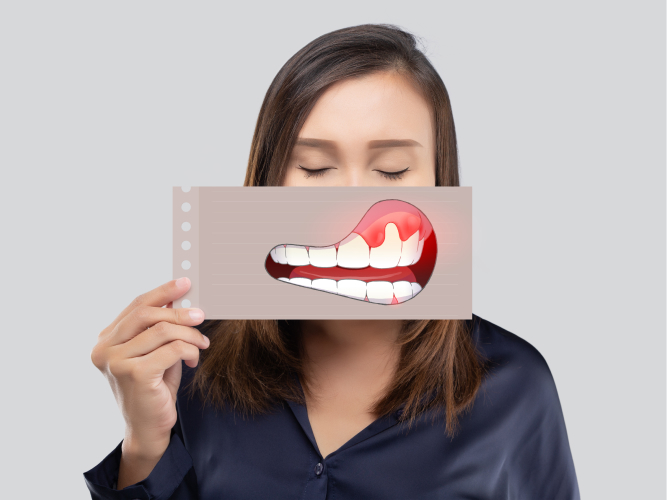Gum Diseases and Treatments
An aesthetic smile is the expression of power;
the smile is the sharp sword of this power.

Gum diseases are a set of conditions that lead to inflammation and infection in the gums. Plaque buildup and poor oral hygiene are the most common causes of gum disease. These can also be caused by factors such as smoking, hormonal changes, genetic predisposition and side effects of certain medications. Early diagnosis and treatment of gum diseases is important, otherwise they can cause serious tooth loss.
Gum diseases refer to infections and inflammations that occur in the gums. There are two main types of these diseases: gingivitis and periodontitis.
Gingivitis is defined as a mild inflammation of the gums. It usually occurs as a result of poor oral hygiene. When dental plaque and tartar build up in the gums, the gums may become red, swollen, and begin to bleed.
Periodontitis is the spread of infection in the gums to the bone tissue that supports the teeth. If dental plaque and tartar settle below the gum line, the gums recede and loosening of the teeth or even tooth loss may occur.
Other types of gum diseases include aggressive periodontitis, chronic periodontitis, necrotizing periodontal disease, and periodontal abscess.
Gum diseases are a series of infection conditions that occur due to the accumulation of bacterial plaques at the gum line. These bacterial plaques accumulate on tooth surfaces due to reasons such as lack of tooth brushing or flossing.
The most common cause of gum disease is plaque buildup, but other factors may also play a role. These include smoking, hormonal changes, familial predisposition, stress, malnutrition, diabetes and some medications.
Additionally, improper alignment of the teeth and crooked or receding teeth directed towards the gums can also cause gum disease. Some systemic diseases can also affect gum health.
Symptoms of gum disease may include:
The severity of symptoms may vary depending on the progression of the disease. Early diagnosis and treatment can stop the progression of gum disease and reduce damage.
There are several different methods and practices for treating and preventing gum diseases.
